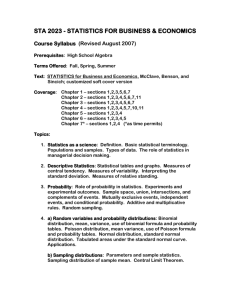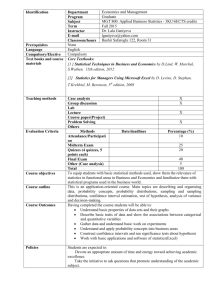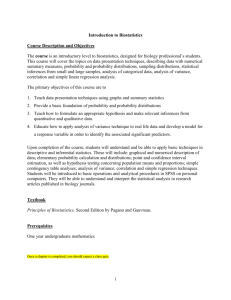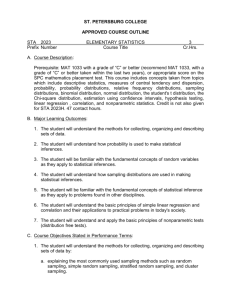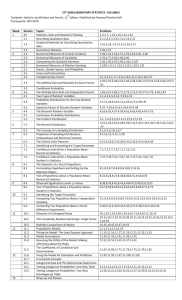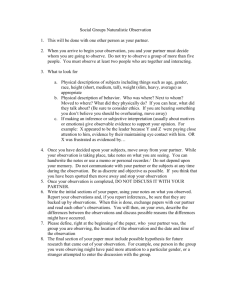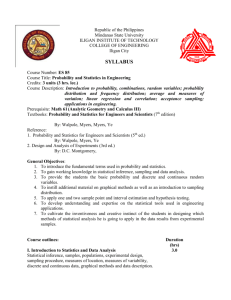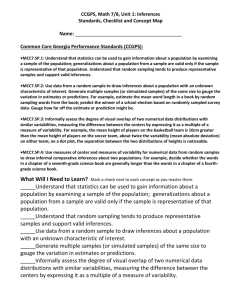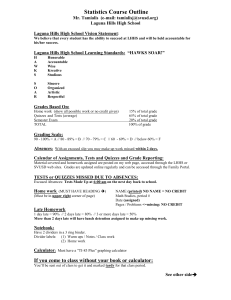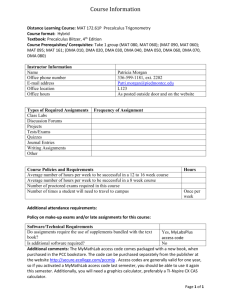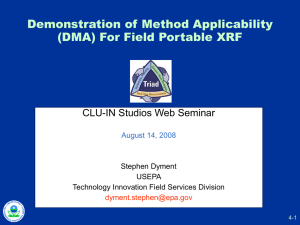MAT 152 Course Outline
advertisement
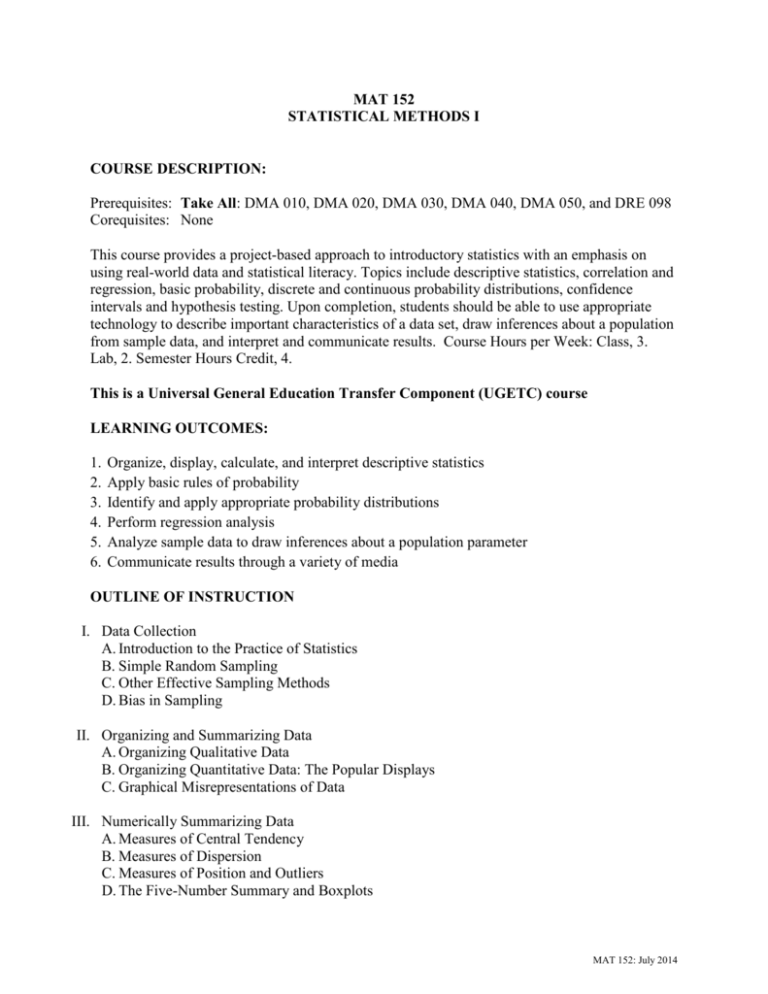
MAT 152 STATISTICAL METHODS I COURSE DESCRIPTION: Prerequisites: Take All: DMA 010, DMA 020, DMA 030, DMA 040, DMA 050, and DRE 098 Corequisites: None This course provides a project-based approach to introductory statistics with an emphasis on using real-world data and statistical literacy. Topics include descriptive statistics, correlation and regression, basic probability, discrete and continuous probability distributions, confidence intervals and hypothesis testing. Upon completion, students should be able to use appropriate technology to describe important characteristics of a data set, draw inferences about a population from sample data, and interpret and communicate results. Course Hours per Week: Class, 3. Lab, 2. Semester Hours Credit, 4. This is a Universal General Education Transfer Component (UGETC) course LEARNING OUTCOMES: 1. 2. 3. 4. 5. 6. Organize, display, calculate, and interpret descriptive statistics Apply basic rules of probability Identify and apply appropriate probability distributions Perform regression analysis Analyze sample data to draw inferences about a population parameter Communicate results through a variety of media OUTLINE OF INSTRUCTION I. Data Collection A. Introduction to the Practice of Statistics B. Simple Random Sampling C. Other Effective Sampling Methods D. Bias in Sampling II. Organizing and Summarizing Data A. Organizing Qualitative Data B. Organizing Quantitative Data: The Popular Displays C. Graphical Misrepresentations of Data III. Numerically Summarizing Data A. Measures of Central Tendency B. Measures of Dispersion C. Measures of Position and Outliers D. The Five-Number Summary and Boxplots MAT 152: July 2014 IV. Probability A. Probability Rules B. The Addition Rule and Complements V. Discrete Probability Distributions A. Discrete Random Variables B. The Binomial Probability Distribution VI. The Normal Probability Distribution A. Properties of the Normal Distribution B. Applications of the Normal Distribution VII. Sampling Distributions A. Distribution of the Sample Mean B. Distribution of the Sample Proportion VIII. Estimating the Value of a Parameter Using Confidence Intervals A. Estimating a Population Proportion B. Estimating a Population Mean IX. Hypothesis Tests Regarding a Parameter A. The Language of Hypothesis Testing B. Hypothesis Tests for a Population Proportion C. Hypothesis Tests for a Population Mean X. Inferences on Two Samples A. Inferences about Two Population Proportions B. Inferences about Two Means: Dependent Samples C. Inferences about Two Means: Independent Samples XI. Describing the Relation Between Two Variables A. Scatter Diagrams and Correlation B. Least Squares Regression XII. Oral and Written Presentation of statistical results/analysis throughout the course REQUIRED TEXTBOOK AND MATERIALS: Sullivan, Michael, III, Fundamentals of Statistics, 4th Ed, Prentice Hall, 2012. CALCULATOR: TI-83/84 Graphing Calculator MAT 152: July 2014



